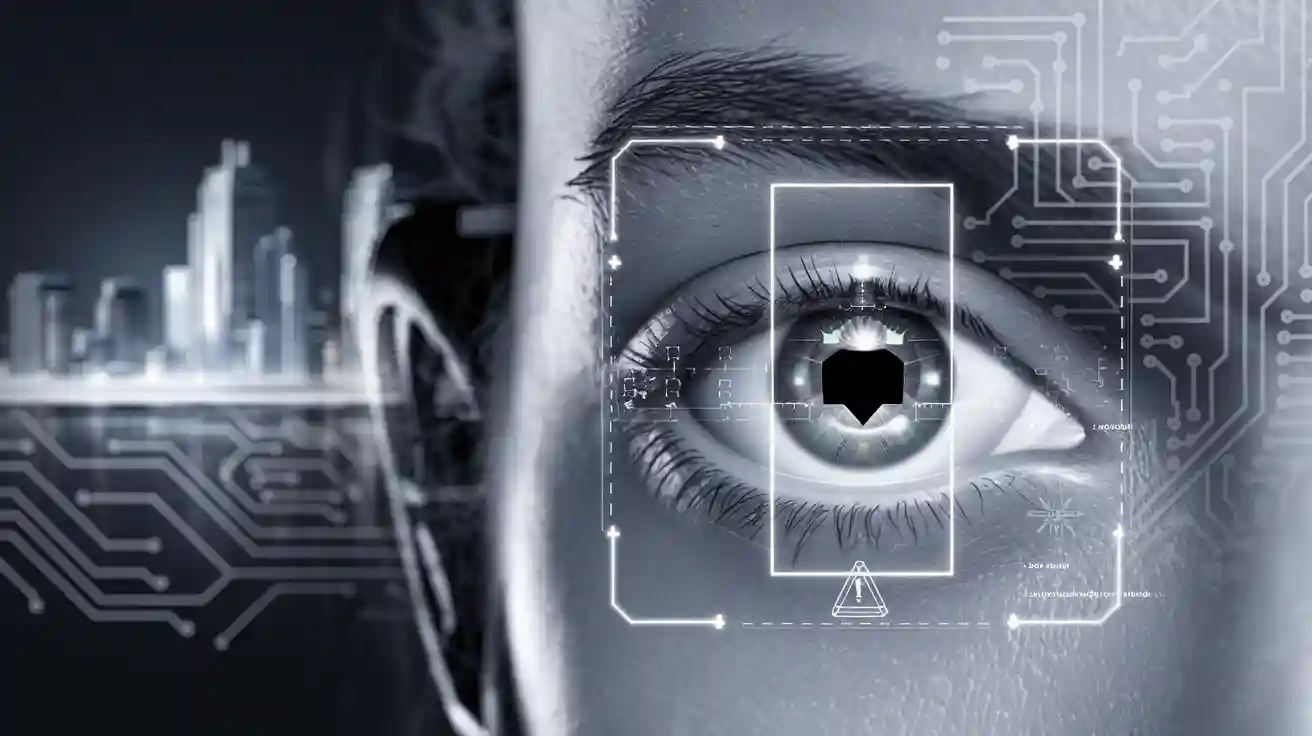
A false negative machine vision system error occurs when the system fails to identify an actual defect or hazard during inspection. This type of false negative machine vision system mistake can result in overlooked flaws in products or missed dangers in safety-critical environments. By 2025, industries depend heavily on false negative machine vision systems to maintain quality and safety standards. Missing a defect, which is a false negative machine vision system issue, often poses a greater risk than a false positive that incorrectly flags a non-issue. Formal verification methods in safety-critical sectors strive to minimize both false positives and false negatives, but false negative machine vision system errors remain a significant concern because they allow real problems to go undetected. It is crucial for professionals to understand the impact of a false negative machine vision system on inspection processes to safeguard quality and avoid costly or dangerous mistakes.
Missing a real problem during inspection can have severe consequences, especially in industries where quality and safety matter most.
Key Takeaways
- False negatives happen when machine vision systems miss real defects or hazards, letting problems go unnoticed.
- Missing defects can cause serious safety risks, lower product quality, and lead to costly recalls or loss of trust.
- Poor data quality, model limits, and environmental changes often cause false negatives in inspection systems.
- Balancing sensitivity and specificity through calibration and threshold tuning helps reduce false negatives.
- Using advanced AI, diverse data, and regular system updates improves detection and keeps products safe.
What Are False Negatives
False Negative Machine Vision System
A false negative in a machine vision system happens when the system fails to detect a real defect or hazard. This means the system looks at an item with a problem but does not recognize it. In statistics, experts call this a Type II error. The false negative machine vision system error is serious because it lets a real issue pass through inspection. For example, in defect detection on a production line, a false negative occurs when a cracked part moves forward as if it were perfect. This kind of misclassification can lead to faulty products reaching customers or unsafe conditions in the workplace.
False negatives in machine vision systems occur when the model incorrectly classifies a positive instance as negative. The system misses the detection of a true defect, which can have major consequences. In healthcare, a false negative might mean a computer vision system fails to spot a tumor in a scan. In security, it could mean missing a threat. These errors represent a failure to identify true positive cases, which is why reducing false negatives is so important in any detection task.
Missing a defect during detection can result in costly recalls, safety hazards, or loss of trust in the product.
Confusion Matrix Basics
A confusion matrix helps people understand how well a classification algorithm works in machine vision. It shows four main results: true positives, true negatives, false positives, and false negatives. True positives mean the system correctly detects a defect. True negatives mean it correctly identifies a good item. False positives happen when the system wrongly detects a defect where there is none. False negatives, as discussed, mean the system misses a real defect.
The confusion matrix allows engineers to calculate important metrics like accuracy, precision, recall, and the F1 score. Accuracy shows how often the system makes correct predictions. Precision tells how many detected defects are actually real. Recall, also called sensitivity, measures how well the system finds all real defects. These metrics help teams find weaknesses in detection and improve the machine vision system. By studying the confusion matrix, professionals can spot patterns of erroneous categorization and misclassification, leading to better defect detection and safer products.
Impact on Quality and Safety

Inspection Systems Risks
False negatives in inspection systems create serious risks for quality and safety. When a system misses a real defect, the problem can move forward in the process without anyone noticing. This failure in detection lowers the true positive rate and directly impacts product quality. In industrial settings, undetected contaminants or flaws can lead to dangerous situations or costly recalls. The false negative rate equals one minus the true positive rate, so every missed detection means a real issue goes unnoticed.
In quality control, missing a defect can have much greater consequences than flagging a harmless item. A single undetected problem can cause widespread failures or safety hazards.
Inspection systems must balance sensitivity and specificity. Increasing sensitivity helps catch more defects but may also raise false positives. However, in safety-critical environments, reducing false negatives takes priority. For example, in water testing, missing a toxic chemical due to a false negative can put many people at risk. In manufacturing, even a small false negative rate can result in thousands of defective products reaching customers, especially in high-volume production lines.
- Key risks of false negatives in inspection systems:
- Lower product quality due to undetected defects.
- Increased safety hazards in consumer and industrial products.
- Higher costs from recalls, repairs, or liability claims.
- Loss of trust in brands and products.
- Regulatory penalties for failing to meet safety standards.
Inspection systems that rely on outdated technology or limited data often show higher false negative rates. Legacy machine vision systems struggle with process variations and may not detect all types of defects. Modern AI and machine learning models, trained on large and varied datasets, can reduce false negatives and improve detection accuracy over time.
Industry Examples
Many industries face challenges from false negatives in inspection and diagnostics. In automotive manufacturing, missing a defect in a safety-critical part can lead to accidents or recalls. Companies like Tesla and Volvo use advanced detection systems to reduce false negatives and improve safety. For example, Tesla’s Autopilot system lowered accident rates by 40% by improving hazard detection. Volvo’s connected safety technology gives drivers extra reaction time, reducing missed safety events.
In medical diagnostics, false negatives can have life-threatening consequences. If a medical imaging system fails to detect a tumor, the patient may not receive timely treatment. High recall in detection systems is vital for accurate diagnosis and patient safety. Medical diagnostics rely on sensitive inspection systems to catch every possible sign of disease. Missing a real issue in diagnostics can delay care and worsen outcomes.
- Real-world impacts of false negatives:
- In high-volume manufacturing, such as beverage production, a 0.01% false negative rate can mean millions of defective bottles go undetected each year.
- Automotive manufacturing uses predictive analytics to reduce false negatives, leading to fewer breakdowns and accidents. Advanced driver assistance systems have cut forward collisions by 38% and reduced collision severity by 45%.
- Medical diagnostics depend on accurate detection. Missed findings in medical imaging can result in delayed diagnosis and treatment, affecting patient survival rates.
| Industry | Risk of False Negatives | Example Impact |
|---|---|---|
| Automotive | Missed defects in safety parts | Increased accident rates, costly recalls |
| Manufacturing | Undetected flaws in products | Large-scale waste, safety hazards |
| Medical Diagnostics | Missed disease signs in imaging | Delayed diagnosis, worse patient outcomes |
| Food & Beverage | Contaminants not detected | Health risks, loss of consumer trust |
False negatives often prove more dangerous than false positives. While a false positive may cause extra checks or minor delays, a false negative allows a real defect or hazard to go unnoticed. This can lead to severe safety incidents, financial losses, and damage to reputation. High quality in inspection and diagnostics depends on minimizing false negatives and ensuring reliable detection.
Reliable detection in inspection systems protects both product quality and human safety. Reducing false negatives is essential for high quality outcomes in every industry.
Causes
Data and Model Issues
Data quality plays a major role in the accuracy of machine vision systems. When the training data lacks variety or contains errors, the system struggles to recognize real defects. For example, image-based inspection systems in structural health monitoring often miss actual damage if the training images do not show enough examples of different damage types or environmental conditions. This leads to false negatives and increases the risk of misclassification. High-quality, diverse data helps the classification algorithm learn to spot more defects and improves test sensitivity.
Model limitations also contribute to false negatives. If the model cannot generalize well, it may fail to detect new or rare defects. Techniques like data augmentation, including synthetic images, help the model handle real-world scenarios better. However, poor data quality or limited model capacity can still cause misclassification and lower test sensitivity. When the system misses a defect, it increases the false failure rate and reduces trust in automated inspection.
Threshold settings affect test sensitivity as well. Setting a high threshold may reduce false positives but can increase false negatives. Engineers must balance sensitivity and specificity to achieve the best results. The receiver operating characteristic (ROC) curve and precision-recall curves help teams choose the right threshold for their needs. These tools allow adjustment of test sensitivity based on the costs and consequences of errors.
High test sensitivity means the system catches more real defects, but it may also flag more false positives. Finding the right balance is key.
Environmental Factors
Environmental conditions can impact the performance of machine vision systems. Changes in lighting, temperature, or background can make it harder for the system to detect defects. For example, glare or shadows may hide cracks or contamination, leading to false negatives. Dust, vibration, or camera misalignment can also cause the system to miss real issues.
Operators must regularly calibrate equipment and monitor environmental changes to maintain high test sensitivity. Even the best classification algorithm can struggle if the environment changes too much. Regular updates and checks help keep the system accurate and reduce misclassification.
The trade-off between false positives and false negatives depends on the application. Recent research shows that flexible metrics, like event-based performance, allow users to adjust the balance between sensitivity and specificity. In some cases, such as safety-critical systems, higher test sensitivity is more important, even if it means more false positives. In other cases, reducing false alarms may take priority.
Regular monitoring and adjustment help machine vision systems maintain high sensitivity and reduce the risk of missed defects.
Reducing False Negatives

Improving Machine Vision
Machine vision systems in 2025 use advanced tools to lower false negatives and boost sensitivity. High-quality sensor data plays a key role. For example, dynamic biosensor responses, when analyzed with machine learning and theory-guided feature engineering, help systems catch more real defects. These methods use the initial sensor response, not just steady-state data, to improve detection. This approach increases sensitivity and accuracy, especially in medical diagnostics and biosurveillance, where missing a problem can have serious consequences.
Modern ai-driven inspections rely on deep learning and edge AI to process images quickly and accurately. Companies like Cognex use these technologies for real-time defect detection and pattern recognition. Their systems distinguish between normal variations and true defects, reducing both false positives and false negatives. In manufacturing, ai-driven inspections adapt to changing products and environments, keeping detection sensitivity high.
Regular updates and retraining with diverse data sets help machine vision systems learn new defect types and maintain high accuracy.
Better Inspection Systems
Effective vision solution design includes careful calibration and threshold adjustment. Calibration with digital grid overlays reduces variation in detection results. Studies show that after calibration, the difference between automated and manual measurements drops to just 5.6%. This improvement means more reliable detection and fewer missed defects. Adjusting classification thresholds also helps balance precision and recall. Lowering the threshold increases sensitivity, catching more real issues, while raising it improves precision.
Recent research introduces new calibration techniques, like Expected Severity Calibration Error (ESCE), to match predicted probabilities with actual defect severity. These methods use advanced mapping functions and reliability diagrams to improve the accuracy of severity assessment. This process optimization reduces the need for frequent re-labeling and supports better inspection outcomes.
Ai-driven inspections continue to evolve. Flexible automation systems learn from new data, handle frequent product changes, and maintain inspection accuracy. These systems support false failure reduction and keep sensitivity at optimal levels. Ongoing tuning and balancing ensure that inspection systems deliver safe, high-quality results across industries.
Consistent calibration, threshold tuning, and advanced AI keep detection sensitivity high and reduce the risk of false negatives.
Minimizing false negatives in machine vision systems remains vital for quality and safety, especially in diagnostics and medical diagnostics. Key performance indicators like recall and F1 score help teams track improvements. Regular system evaluation, including root cause analysis and diverse data sources, supports early error detection in diagnostics. Robust system design, such as ensemble methods and data augmentation, lowers false negatives in medical diagnostics. Continuous improvement metrics and quality assurance tools ensure that diagnostics and medical diagnostics adapt to new risks and maintain high accuracy.
FAQ
What is a false negative in a machine vision system?
A false negative happens when the system misses a real defect or hazard. The system says everything is fine, but a problem exists. This mistake can lead to unsafe products or missed dangers.
Why do false negatives matter more than false positives?
False negatives allow real problems to go unnoticed. This can cause safety risks or product failures. False positives may only cause extra checks. Missing a real issue often leads to bigger consequences.
How can companies reduce false negatives?
Companies use better data, advanced AI, and regular calibration. They also adjust detection thresholds. These steps help the system find more real defects and improve safety.
Which industries face the most risk from false negatives?
Industries like automotive, healthcare, and food production face high risks. A missed defect in these fields can cause accidents, health issues, or product recalls.
Tip: Regular system updates and diverse training data help lower false negatives.
See Also
Effective Strategies To Minimize False Positives In Vision Systems
Improving Safety Protocols With Masking In Vision Systems 2025
Analyzing How Machine Vision Detects Flaws Accurately And Efficiently
Essential Insights Into Computer And Machine Vision Technologies
Exploring Whether Filtering Enhances Accuracy In Vision Systems









